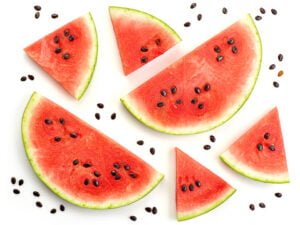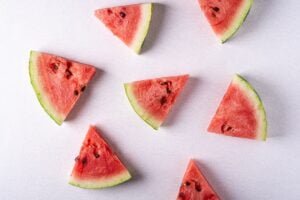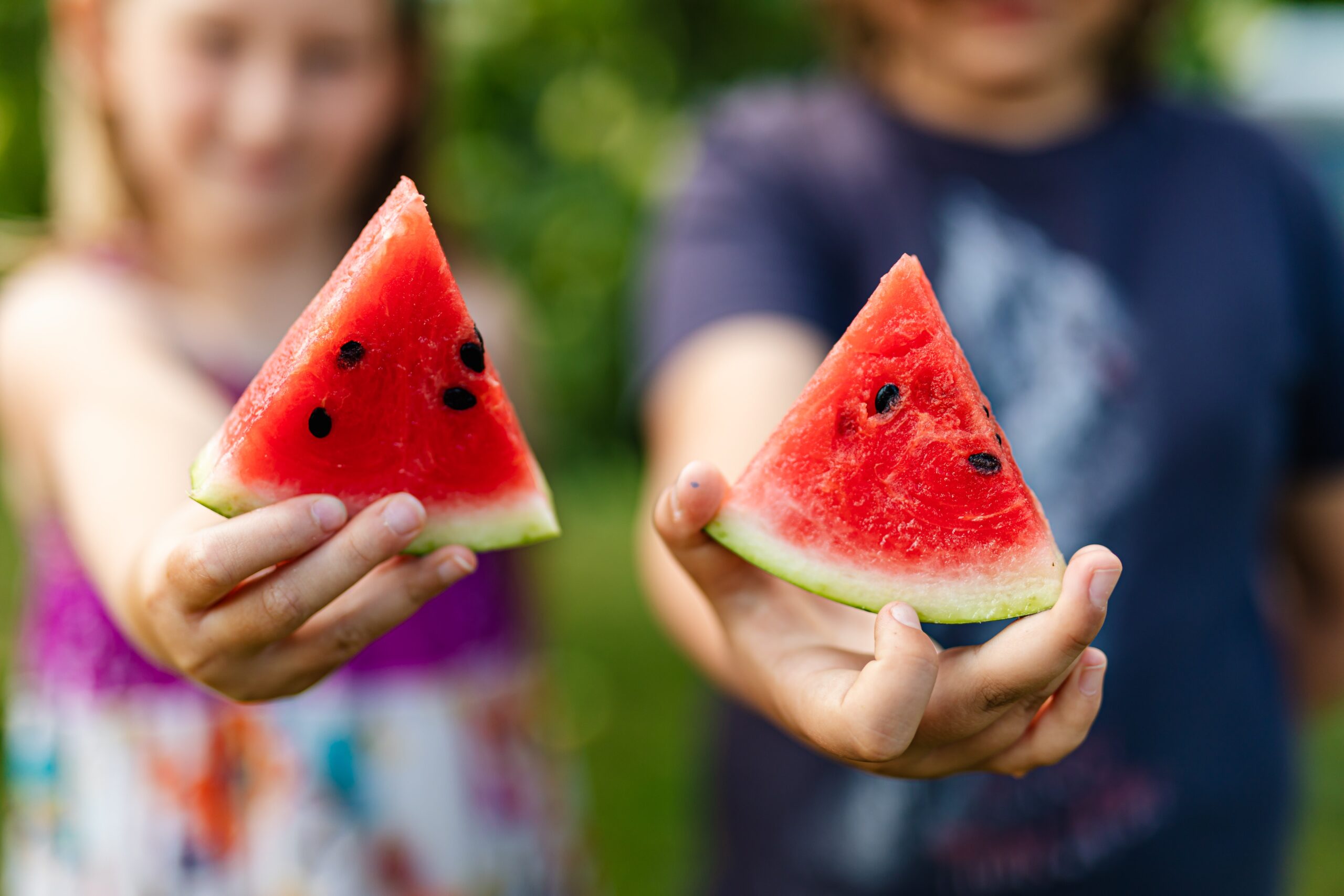This article is about how to save watermelon seeds? Have you ever had a watermelon that was so juicy and delicious that you wished every melon you ate after that was just as good? Perhaps you’ve considered extracting seeds from watermelons and growing your own. Let’s start with an introduction, then later on we will discuss how to save watermelon seeds.
Watermelon
Citrullus lanatus is a member of the Cucurbitaceae family that originated in southern Africa. The fruit is essentially a berry with a thick skin or exocarp and a juicy core (botanically known as a pepo). Watermelon is a sort of melon, despite not being in the genus Cucumis. Watermelon flesh is often ruby red, but it can also be pink, orange, yellow, or white. Small, black, or slightly mottled black/brown seeds.

A watermelon can contain anywhere from 300 to 500 seeds depending on its size. The seeds are edible and tasty when roasted, despite being commonly thrown. They’re also nutrient-dense and fat-rich. Over 600 calories are in a cup of watermelon seeds. Let’s discuss how to save watermelon seeds.
Watermelon Seeds Extraction
Although it isn’t always possible to save seeds from all types of produce, doing so is an act of independence that teaches about plant biology and is simply entertaining, at least for this garden geek. Separating the seeds from the flesh of a watermelon takes a little effort, but it’s achievable. Harvesting watermelon seeds for growing is simple if time-consuming. Because seeds do not continue to ripen once the melon is removed from the vine, the melon should be allowed to ripen long past its edibility before harvesting.
Keep the melon in a cool, dry place for another three weeks. The seeds will be damaged if the watermelon is chilled. It’s time to remove the seeds from the watermelon after curing it. Cut the melon open and scoop out the seeds, flesh and all. Fill a big basin halfway with water and pour the “guts” in. Dead (non-viable) seed sinks to the bottom, whereas healthy seed floats with the rest of the pulp. Remove the “floaters” and puree the remaining ingredients.
Drain and rinse the viable seeds in a strainer to remove any clinging pulp. Allow the seeds to dry for a week or so on a towel or newspaper in a sunny location.
Can You Plant Watermelon Seeds?
Remember that extracting watermelon seeds to grow them can result in a slightly different melon the next year, depending on whether the melon is a hybrid or not. Hybrid watermelons are more than likely to be found in supermarkets. A hybrid is a cross between two types of watermelon that have been chosen for their best qualities and contributed to the new hybrid. If you try to grow fruit from these hybrid seeds, you can end up with a plant that only has one of these features – an inferior parent version.

Whether you choose to throw caution to the wind and use seeds from a supermarket melon or an open-pollinated heirloom variety, keep in mind that watermelons require a lot of space. Because melons rely on pollinators, they are more likely to cross-pollinate, resulting in a potentially disastrous result. Keep different types of watermelons at least 12 miles (.8 km) apart.
Watermelon Seed Storage
Before storing watermelon seeds, make sure they are totally dry. If you leave any moisture in them, you’ll end up with mildewed seed when it’s time to use it. Seeds can be stored in a sealed jar or plastic bag for five years if properly prepared.
I’ll show you how to conserve watermelon seeds to produce more watermelons the following year in this post. I’m sure you’re aware of my fondness for watermelon. This is a fantastic way to store watermelon seeds.
You most likely have a few watermelons in your freezer, and if you do, you can always have watermelon on hand to add to your next fruit salad. If you know how to conserve watermelon seeds, that is. Is it, however, a good idea?
How to save watermelon seeds?
Watermelons are easy to cultivate year after year if you save the seeds. Here’s how to save watermelon seeds.
cleaning
Look for flesh on the seeds first. If you notice any, carefully scrape the watermelon seeds clean with a vegetable brush under running water. Then, on a layer of paper towels, put out your seeds. Allow them to dry overnight after that. While it may appear to be a lot of effort, washing watermelon seeds is an important stage in the process that guarantees they germinate more successfully.
- The watermelon seeds will need to be washed. Clean them with warm water with your hands.
- You can now use a towel or a paper towel to absorb all of the extra water.
- Then, using a knife, take off the outer shell of the watermelon seeds.
Seeds should not germinate
On a paper towel, spread the clean seeds out evenly. Allow them to dry for a day or two. This will prolong the seed’s life, enhance germination rates, and restore everything to its former glory.
Seed germination is transforming a nearly similar seed into a plant. This procedure impacts both the quantity and quality of the crops you produce.
You can prevent seeds from germinating by doing the following:
- Keep your seeds away from heat and moisture since they will degrade the quality of the seeds and impede the plant’s growth.
- When watering seeds, be careful to give them the attention they deserve. Fill a cup halfway with water, then add the seeds, allowing air to reach them. With the seeds, you can also use some filters.
- Air must be provided to your seeds for them to germinate, which necessitates oxygen.
Seeds dry in a container or a plastic bag
Before storing the seeds, make sure they are totally dry. Using a fan to circulate air in the room hanging the seedheads is the greatest approach to speed up the drying process.
Seeds should be stored in a paper bag or envelope. Seeds should not be stored in plastic bags or airtight jars since moisture will deteriorate the seed and destroy the sample. When feasible, store the seed in a dry location.
Read About: Do blueberries have seeds?
Continue to keep an eye on the seeds
Okay, your seeds have now been safely stored in a suitable location. It’s crucial to keep track of the days with a note or a table. Please note when you put seeds in a container or plastic bag and when you plan to open them.
It will assist you in keeping track of the data and observing the outcome for future watermelon seed preservation activities on your container. As you become more conscious of the issue, your chances of storing them will undoubtedly improve.
It’s a little out of the way for how to conserve watermelon seeds, but it’s a good idea to keep an eye on them.
Store seeds in a cool, dry location.
Container seeds should be stored in a cool, dry place to grow a garden the following year. Please keep them in a dry, temperature-controlled environment. Mold will not form if there is adequate air circulation. Any seeds that appear to be fractured or damaged will not germinate.
If you wish to keep seeds safe inside the container, follow these guidelines:
- If you reside in a humid environment, find a low-relative humidity area in your home. A basement or attic would be excellent. Seeds can also be stored in a non-insulated cupboard not exposed to direct sunlight.
- Ensure that the temperature does not get excessively hot or cold. Temperatures between 40 to 45 degrees Fahrenheit are required for seed storage (5 C and 7C).
- Protect your seeds against rats, birds, and other insects.
That’s all the procedures and techniques of how to save watermelon seeds. Keep in mind that the most important thing is to preserve the quality of the seeds, which we anticipate being able to store for weeks or months.
We know that various variables can contribute to the preservation of some seeds, but we can prevent this by using the strategy outlined above. That’s all about how to save watermelon seeds.

[…] How to save watermelon seeds […]